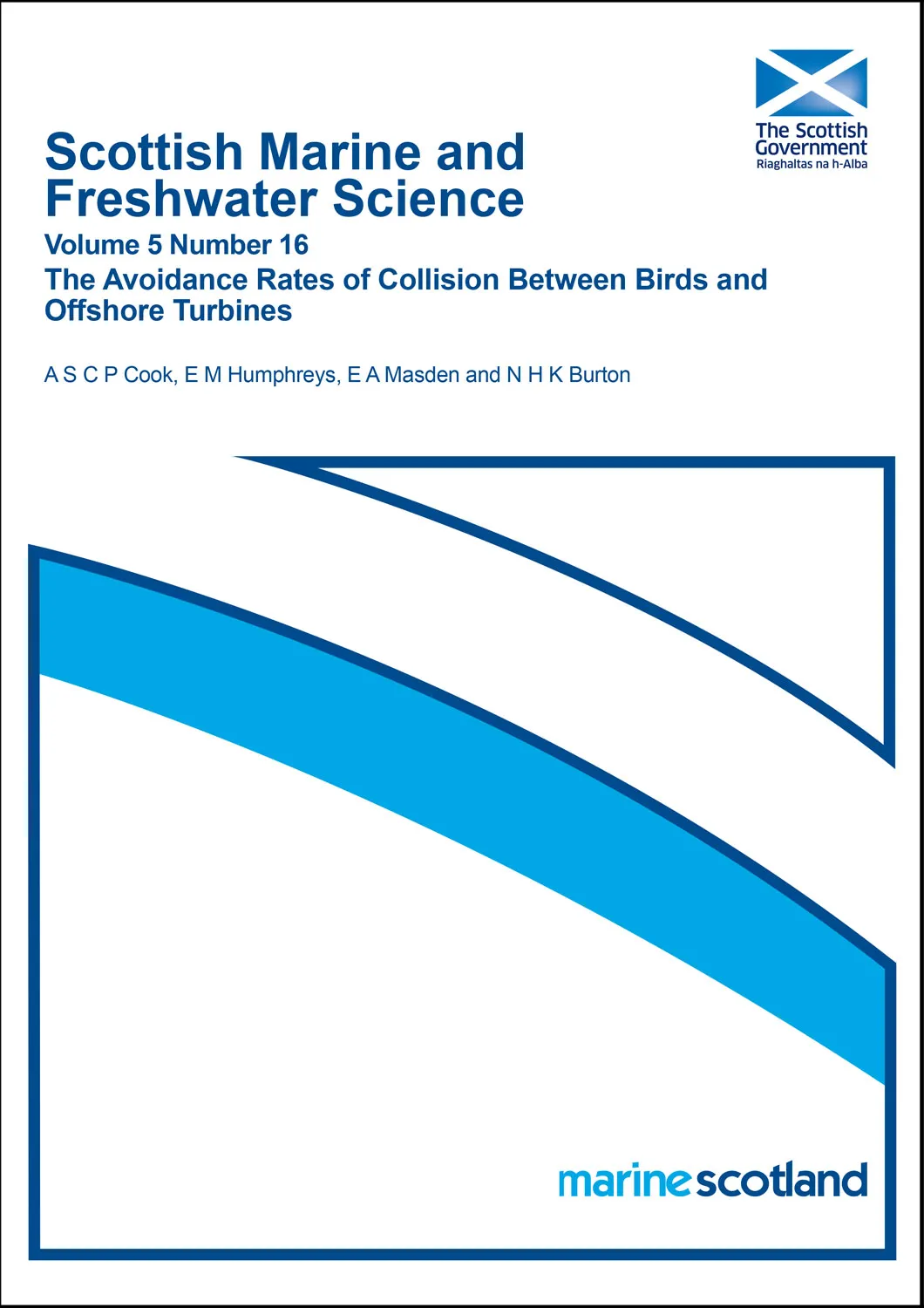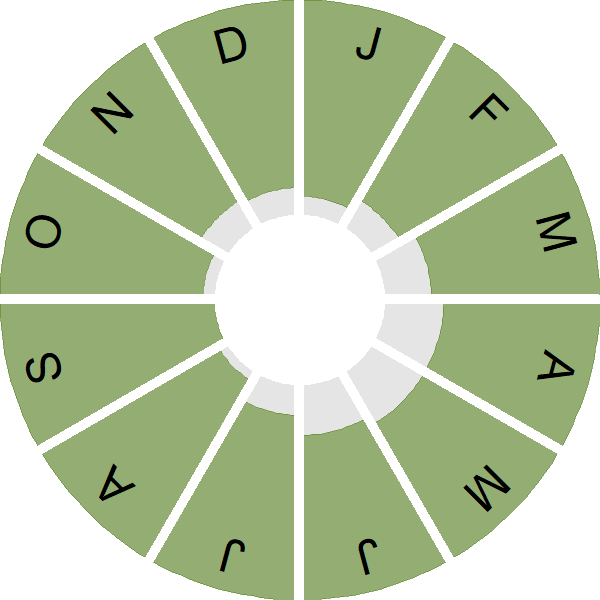Great Black-backed Gull
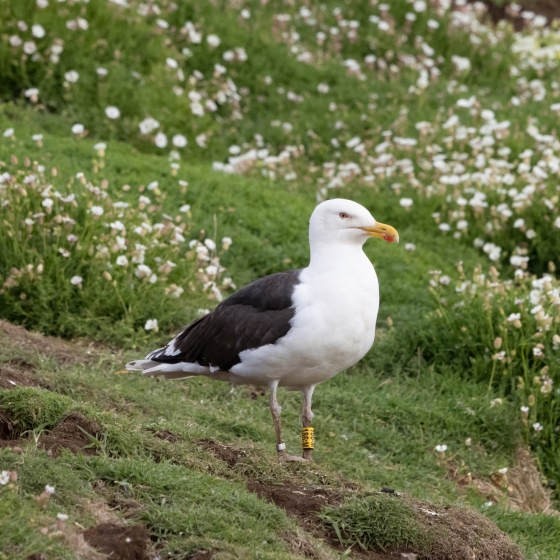
Introduction
This impressive gull can be seen at coastal locations throughout the year, but it is less commonly encountered at inland sites.
Although Great Black-backed Gulls breed at coastal sites around much of our coast, they are absent from most of the North Sea coast. The highest breeding season densities are to be found around the Northern Isles, north-west Scotland and the Atlantic coast of south-west Ireland.
The pronounced pattern of winter abundance, which is greatest in the eastern half of Britain, underlines the arrival of wintering individuals from Scandinavia. Ringing data link these birds with populations in Norway and Sweden.

Key Stats
Identification
ID Videos
This section features BTO training videos headlining this species, or featuring it as a potential confusion species.
Adult black-backed gulls
Songs and Calls
Alarm call:
Flight call:
Status and Trends
Conservation Status
Population Change
Numbers of Great Black-backed Gull remained relatively stable between the 1969–70 Census and Seabird 2000 (1998–2002), with a very shallow decline of 11% (JNCC 2022). Since Seabird 2000, annual monitoring suggests that this shallow decline may have continued although this is uncertain due to wide confidence limits and the recent trend may be stable: the latest Census results (2015–2021) may help clarify the trend once they are available (JNCC 2022). The Great Black-backed Gull remains almost exclusively a coastal-breeding species, although a very small number of pairs have been recorded at inland colonies (Balmer et al. 2013).
Distribution
Wintering Great Black-backed Gulls occur all around the coast of Britain & Ireland, as well as at inland, lowland sites in England and Scotland. Breeding birds have a predominantly coastal distribution around both Britain and Ireland, though they are largely absent from most of the North Sea coast between Lothian and Kent.
Occupied 10-km squares in UK
or view it on Bird Atlas Mapstore.
or view it on Bird Atlas Mapstore.
European Distribution Map
Distribution Change
There has been a substantial 30% range contraction in Ireland since the 1968–72 Breeding Atlas, though much of this loss occurred between 1968–72 and 1988–91. A recent contraction is apparent in western Scotland but is outweighed by gains elsewhere in Britain, especially along the English south coast. Since the 1988–91 Breeding Atlas there has been a 7% increase in the number of 10-km squares occupied in Britain & Ireland.
Change in occupied 10-km squares in the UK
or view it on Bird Atlas Mapstore.
or view it on Bird Atlas Mapstore.
Seasonality
Great Black-backed Gulls are recorded throughout the year.
Weekly pattern of occurrence
The graph shows when the species is present in the UK, with taller bars indicating a higher likelihood of encountering the species in appropriate regions and habitats.

Habitats
Breeding season habitats
Relative frequency by habitat
The graph shows the habitats occupied in the breeding season, with the most utilised habitats shown at the top. Bars of similar size indicate the species is equally likely to be recorded in those habitats.

Movement
Britain & Ireland movement
Foreign locations of birds ringed or recovered in Britain & Ireland
Dots show the foreign destinations of birds ringed in Britain & Ireland, and the origins of birds ringed overseas that were subsequently recaptured, resighted or found dead in Britain & Ireland. Dot colours indicate the time of year that the species was present at the location.
- Winter (Nov-Feb)
- Spring (Mar-Apr)
- Summer (May-Jul)
- Autumn (Aug-Oct)

European movements
EuroBirdPortal uses birdwatcher's records, such as those logged in BirdTrack to map the flows of birds as they arrive and depart Europe. See maps for this species here.
The Eurasian-African Migration Atlas shows movements of individual birds ringed or recovered in Europe. See maps for this species here.
Biology
Productivity and Nesting
Nesting timing
Egg measurements
Clutch Size
Survival and Longevity
Survival is shown as the proportion of birds surviving from one year to the next and is derived from bird ringing data. It can also be used to estimate how long birds typically live.
View number ringed each year in the Online Ringing Report.
lifespan
Biometrics
Wing length and body weights are from live birds (source).
Wing length
Body weight
Ring Size
Classification, names and codes
Classification and Codes
- Order: Charadriiformes
- Family: Laridae
- Scientific name: Larus marinus
- Authority: Linnaeus, 1758
- BTO 2-letter code: GB
- BTO 5-letter code: GBBGU
- Euring code number: 6000
Alternate species names
- Catalan: gavinot atlàntic
- Czech: racek morský
- Danish: Svartbag
- Dutch: Grote Mantelmeeuw
- Estonian: merikajakas
- Finnish: merilokki
- French: Goéland marin
- Gaelic: Farspag
- German: Mantelmöwe
- Hungarian: dolmányos sirály
- Icelandic: Svartbakur
- Irish: Droimneach Mór
- Italian: Mugnaiaccio
- Latvian: melnsparnu kaija, kilens
- Lithuanian: balnuotasis kiras
- Norwegian: Svartbak
- Polish: mewa siodlata
- Portuguese: gaivotão-real
- Slovak: cajka morská
- Slovenian: veliki galeb
- Spanish: Gavión atlántico
- Swedish: havstrut
- Welsh: Gwylan Gefnddu Fawr
- English folkname(s): Land Gull
Research
Causes of Change and Solutions
Causes of change
The Great Black-backed Gull has not suffered the substantial declines in populations that have recently affected several other UK seabirds including coastal breeding Herring and Lesser Black-backed Gulls. It has been surmised that this species out-competes other species when scavenging for fishery discards and offal and therefore may continue to be able to benefit from these resources despite reductions in availability which have affected other species (Mitchell et al. 2004).
Publications (4)
The status of the UK’s breeding seabirds
Author: Stanbury, A.J., Burns, F., Aebischer, N.J., Baker, H., Balmer, D., Brown, A.F., Dunn, T., Lindley, P., Murphy, M., Noble, D.G., Owens, R. & Quinn, L.
Published: 2024
Five seabird species are added to the Birds of Conservation Concern Red List in this addendum to the 2021 update, bringing the total number of Red-listed seabird species to 10, up from six since seabirds were last assessed. The Amber List of seabirds moves from 19 to 14 species, and the Green List increases from one to two species.
29.09.24
Papers
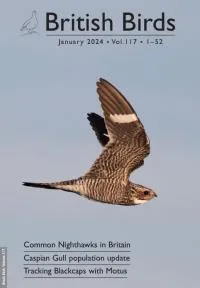
Seabird Population Trends and Causes of Change: 1986–2023
Author: Harris, S.J., Baker, H., Balmer, D.E., Bolton, M., Burton, N.H.K., Caulfield, E., Clarke, J.A.E., Dunn, T.E., Evans, T.J., Hereward, H.R.F., Humphreys, E.M., Money, S. and O’Hanlon, N.J.
Published: 2024
This report presents the latest seabird population trends in breeding abundance and productivity using data from the Seabird Monitoring Programme (SMP).The report documents changes in the abundance and productivity of breeding seabird species in Britain and Ireland from 1986 to 2023, and provides a detailed account of the 2021, 2022 and 2023 breeding seasons.This report includes both inland and coastal populations and trends from the Channel Islands, England, Isle of Man, Northern Ireland, Scotland, Wales and the Republic of Ireland, which are presented where sufficient data are available. The results from this report are used more broadly to assess the health of the wider environment, to inform policy and for conservation action.
21.11.24
Reports Research reports
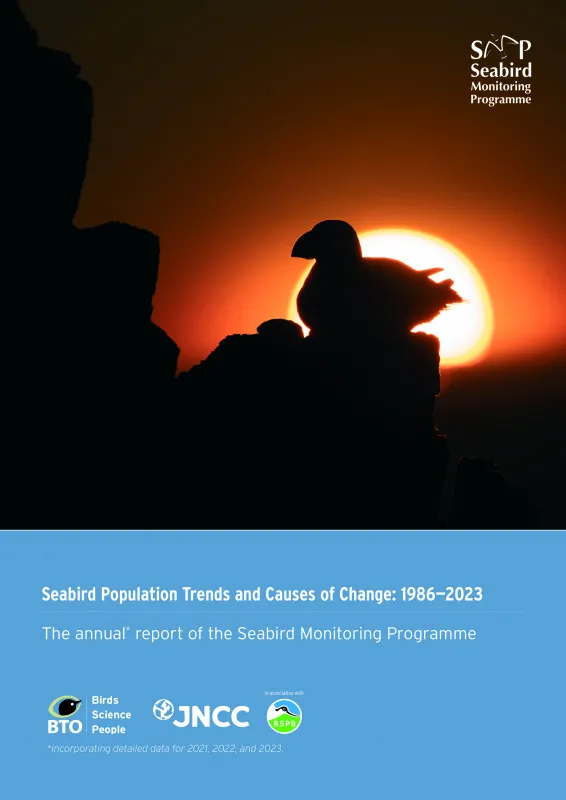
Birds of Conservation Concern Wales 4: the population status of birds in Wales
Author: Johnstone, I.G., Hughes, J., Balmer, D.E., Brenchley, A., Facey, R.J., Lindley, P.J., Noble, D.G. & Taylor, R.C.
Published: 2022
The latest review of the conservation status of birds in Wales. The report assessed all 220 bird species which regularly occur in Wales. There are now 60 species of bird on the Red List, with 91 on the Amber List and just 69 - less than a third of the total number of species - on the Green List.
06.12.22
Reports Birds of Conservation Concern

The avoidance rates of collision between birds and offshore turbines
Author: Cook, A.S.C.P., Humphreys, E.M., Masden, E.A., Band, W. & Burton, N.H.K.
Published: 2014
Report of work carried out by the British Trust for Ornithology in collaboration with the Environmental Research Institute on behalf of the Marine Scotland Science.Accurately estimating birds’ risk of collision with offshore wind turbines is a key part of the decision-making process for proposed renewable developments. However, the evidence base for quantifying the number of birds likely to avoid colliding with turbines is limited. Recent BTO-led work helping to fill this gap, improving the understanding of the impacts of offshore renewables on marine wildlife.
03.12.14
Reports Research reports
